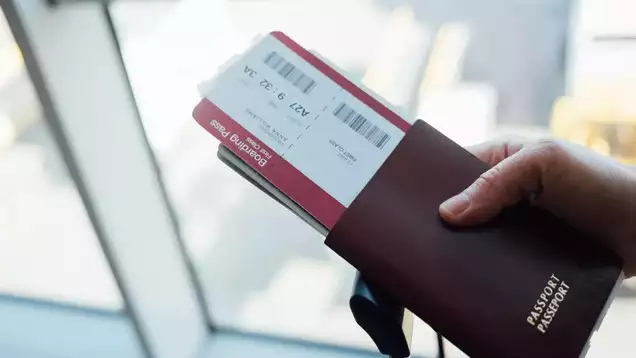Traveling internationally is exciting—there’s the thrill of new destinations, the joy of exploring different cultures, and the anticipation of unforgettable experiences. But before you can set foot on foreign soil, there’s one crucial thing to sort out: your visa.
Whether you’re planning a weekend in Paris or a month-long adventure in Southeast Asia, understanding the visa requirements for your destination is a must. This guide will walk you through everything you need to know about visas, ensuring you’re prepared for a smooth journey.
What Exactly is a Visa?
Let’s start with the basics. A visa is an official document that allows you to enter, stay in, or leave a country. It’s usually stamped or attached to your passport and comes with specific conditions, like how long you can stay and what activities you’re allowed to do.
Visas vary by country and can be for tourism, work, study, or even transit. Some countries have visa-free agreements, meaning you can enter without a visa, but others require you to apply in advance. Knowing the type of visa you need and the process to get it is the first step in planning your trip.
Types of Visas: Which One Do You Need?
Visas come in different flavors, each designed for a specific purpose. Here’s a quick rundown:
- Tourist Visa: The most common type, perfect for short-term leisure trips.
- Business Visa: For those traveling for work-related reasons, like meetings or conferences.
- Student Visa: Required if you’re planning to study abroad.
- Work Visa: Needed if you’re moving to another country for employment.
- Transit Visa: Allows you to pass through a country on your way to another destination.
- Before you start packing, make sure you know which visa applies to your trip. Some visas are easy to obtain, while others might require a bit more paperwork and time. And don’t forget, the visa you need might also depend on how long you plan to stay.
Now, let’s dive into the nitty-gritty of how to get that visa and what you should keep in mind during the process.
The Application Process: Timing is Everything

Applying for a visa can be a breeze or a bit of a process, depending on your destination. The key here is timing. Some countries offer visas on arrival, while others require you to apply weeks or even months in advance. Missing the application window could derail your travel plans.
When applying, you’ll usually need to fill out a form, submit a passport-sized photo, and provide documents like your passport (with at least six months of validity left), proof of accommodation, and sometimes even a letter of invitation from a host in the destination country. Each country has its own set of requirements, so double-check the official website of the embassy or consulate.
And here’s a pro tip—before you start, make sure you’re clear on the packing tips for international travelers. Organize all your documents, keep copies of everything, and store them in an easily accessible part of your carry-on. Being organized can make the process much smoother and less stressful.
How to Simplify Your Visa Experience
If the idea of handling all this paperwork feels overwhelming, you’re not alone. The good news is that there are services out there designed to make the visa process as easy as booking a flight. It’s called iVisa, and it’s a one-stop-shop for all your visa needs.
iVisa takes the guesswork out of the application process. You simply enter your destination, and they guide you through the entire process, from start to finish. They’ll tell you what documents you need, how much it will cost, and how long it will take. Plus, they offer 24/7 customer support to answer any questions you might have along the way.
The best part? iVisa handles all the bureaucracy, so you can focus on planning your trip, not stressing over forms and deadlines. Whether you’re applying for a tourist visa to Japan or a business visa to China, iVisa has you covered. This service is especially helpful if you’re visiting multiple countries with different visa requirements—because who has time to juggle all that?
Navigating Visa-Free Travel

While visas are a necessity for many international trips, some destinations offer visa-free entry for travelers from certain countries. If you’re lucky enough to hold a passport that grants you visa-free access, you can skip the application process altogether. However, even visa-free doesn’t mean rule-free.
Most visa-free countries have restrictions on how long you can stay—typically 90 days within a 180-day period. Some countries might also require you to have a return ticket, proof of accommodation, or sufficient funds to cover your stay. Always check the specific requirements before you go, as these can change frequently.
Visa-free travel is great for spontaneous trips, but make sure you’re aware of any restrictions. Overstaying your welcome in a visa-free country can lead to fines or even bans from future visits.
What Happens If You Overstay Your Visa?
Let’s be honest—things don’t always go as planned. Maybe you fall in love with a city and want to stay longer, or maybe your return flight gets canceled. Whatever the reason, overstaying your visa is a big no-no.
Penalties for overstaying vary by country but can include hefty fines, deportation, or even a ban on returning. In some places, overstaying by just a day can result in serious consequences, while others might offer a grace period. The best way to avoid this is to plan your trip carefully and be aware of your visa’s expiration date.
If you find yourself needing more time, check if you can extend your visa—some countries offer this option, but it’s better to apply for an extension before your current visa expires.
Navigating the world of visas might seem daunting at first, but with a little planning and the right tools, it doesn’t have to be. Whether you’re applying for a tourist visa, using iVisa to simplify the process, or taking advantage of visa-free travel, understanding the ins and outs of visas is key to a hassle-free international adventure. So, start planning, get your documents in order, and enjoy the journey ahead. After all, the world is waiting!





